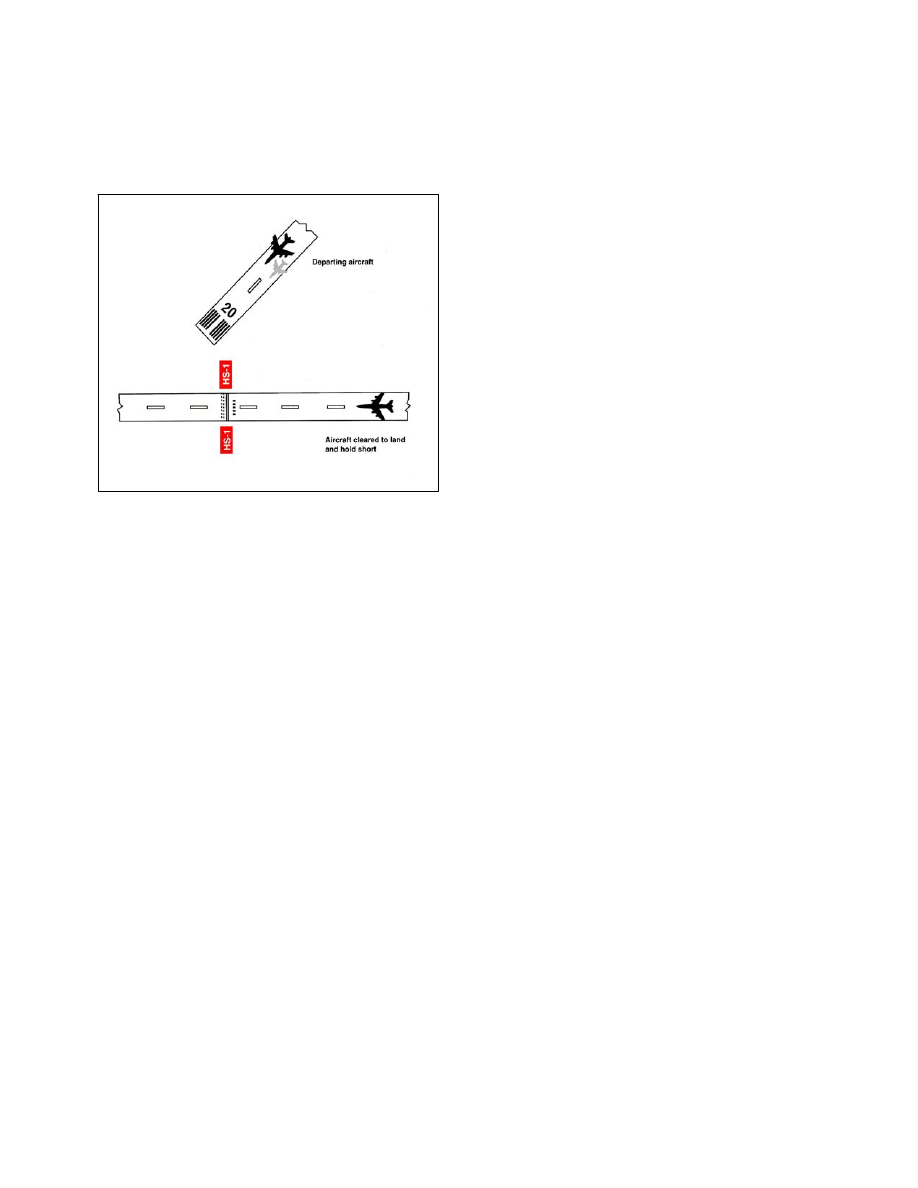
AIM
8/15/19
4
−
3
−
18
Airport Operations
FIG 4
−
3
−
10
Land and Hold Short of a Designated Point
on a Runway Other Than an Intersecting
Runway or Taxiway
5.
If, for any reason, such as difficulty in
discerning the location of a LAHSO intersection,
wind conditions, aircraft condition, etc., the pilot
elects to request to land on the full length of the
runway, to land on another runway, or to decline
LAHSO, a pilot is expected to promptly inform air
traffic, ideally even before the clearance is issued. A
LAHSO clearance, once accepted, must be adhered
to, just as any other ATC clearance, unless an
amended clearance is obtained or an emergency
occurs. A LAHSO clearance does not preclude a
rejected landing.
6.
A pilot who accepts a LAHSO clearance
should land and exit the runway at the first convenient
taxiway (unless directed otherwise) before reaching
the hold short point. Otherwise, the pilot must stop
and hold at the hold short point. If a rejected landing
becomes necessary after accepting a LAHSO
clearance, the pilot should maintain safe separation
from other aircraft or vehicles, and should promptly
notify the controller.
7.
Controllers need a full read back of all
LAHSO clearances. Pilots should read back their
LAHSO clearance and include the words, “HOLD
SHORT OF (RUNWAY/TAXIWAY/OR POINT)” in
their acknowledgment of all LAHSO clearances. In
order to reduce frequency congestion, pilots are
encouraged to read back the LAHSO clearance
without prompting. Don’t make the controller have to
ask for a read back!
c. LAHSO Situational Awareness
1.
Situational awareness is vital to the success of
LAHSO. Situational awareness starts with having
current airport information in the cockpit, readily
accessible to the pilot. (An airport diagram assists
pilots in identifying their location on the airport, thus
reducing requests for “progressive taxi instructions”
from controllers.)
2.
Situational awareness includes effective
pilot
−
controller radio communication. ATC expects
pilots to specifically acknowledge and read back all
LAHSO clearances as follows:
EXAMPLE
−
ATC:
“(Aircraft ID) cleared to land runway six right, hold
short of taxiway bravo for crossing traffic (type aircraft).”
Aircraft:
“(Aircraft ID), wilco, cleared to land runway six
right to hold short of taxiway bravo.”
ATC:
“(Aircraft ID) cross runway six right at taxiway
bravo, landing aircraft will hold short.”
Aircraft:
“(Aircraft ID), wilco, cross runway six right at
bravo, landing traffic (type aircraft) to hold.”
3.
For those airplanes flown with two crew-
members, effective intra
−
cockpit communication
between cockpit crewmembers is also critical. There
have been several instances where the pilot working
the radios accepted a LAHSO clearance but then
simply forgot to tell the pilot flying the aircraft.
4.
Situational awareness also includes a thor-
ough understanding of the airport markings, signage,
and lighting associated with LAHSO. These visual
aids consist of a three
−
part system of yellow
hold
−
short markings, red and white signage and, in
certain cases, in
−
pavement lighting. Visual aids assist
the pilot in determining where to hold short.
FIG 4
−
3
−
8, FIG 4
−
3
−
9, FIG 4
−
3
−
10 depict how
these markings, signage, and lighting combinations
will appear once installed. Pilots are cautioned that
not all airports conducting LAHSO have installed any
or all of the above markings, signage, or lighting.
5.
Pilots should only receive a LAHSO
clearance when there is a minimum ceiling of
1,000 feet and 3 statute miles visibility. The intent of
having “basic” VFR weather conditions is to allow
pilots to maintain visual contact with other aircraft
and ground vehicle operations. Pilots should consider
the effects of prevailing inflight visibility (such as
landing into the sun) and how it may affect overall